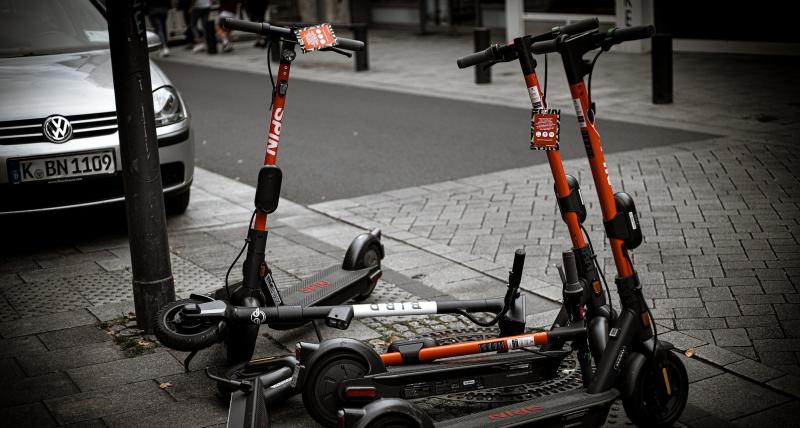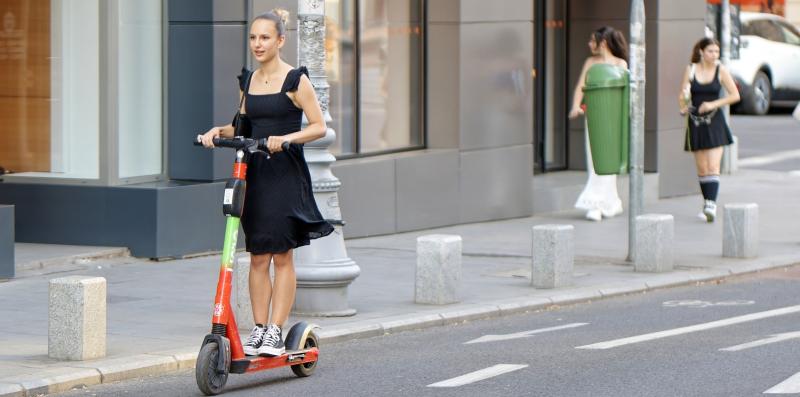One of the key benefits of owning an electric scooter is its portability. Many electric scooters are designed to fold easily, making them convenient to carry and store in tight spaces. Whether you need to fold your scooter for daily commutes or long-term storage, knowing the proper technique can help you keep your scooter safe and well-maintained. In this guide, we’ll walk you through how to fold and store your electric scooter, ensuring it remains in top condition for future rides.
Why Proper Folding and Storage Matters
Folding your electric scooter correctly not only makes it easier to transport but also protects it from damage. Storing your scooter in the right conditions—whether for a short or long period—helps extend its lifespan and maintain battery health. By following proper folding and storage techniques, you’ll avoid unnecessary wear and tear, ensuring your scooter is always ready for your next ride.
How to Fold Your Electric Scooter: A Step-by-Step Guide
1. Power Off Your Scooter
Before folding your electric scooter, always power it off to avoid accidental acceleration or damage to the electronics. Turning off the scooter ensures that it is safe to handle and prevents the motor from engaging while you’re folding it.
Pro tip: Make sure your scooter’s kickstand is engaged so that it remains stable while you prepare to fold it.
2. Release the Folding Mechanism
Most electric scooters come with a simple folding mechanism, usually located at the base of the handlebar stem. Depending on your scooter model, you’ll either need to pull a latch, press a button, or twist a knob to unlock the folding mechanism.
- Latch-Based Mechanism: Pull the latch at the bottom of the handlebar stem to unlock the folding mechanism. Some models may require you to lift the latch upwards.
- Button-Based Mechanism: Press the folding button (usually located near the base of the handlebar stem) to release the folding lock.
- Twist-Based Mechanism: Twist the locking mechanism or knob to release the folding mechanism.
3. Fold the Handlebars (If Applicable)
On some electric scooter models, the handlebars themselves can fold inward to make the scooter even more compact. If your scooter has foldable handlebars, press the designated buttons or pull the levers to collapse them towards the stem. This feature is particularly useful when you need to store the scooter in tight spaces.
4. Lower the Handlebar Stem
Once the folding mechanism is unlocked, gently lower the handlebar stem towards the deck of the scooter. Make sure to fold it slowly and carefully to avoid damaging the scooter’s frame or electrical wiring. Most electric scooters are designed so that the handlebar locks into place once folded, creating a secure, compact shape for easy carrying.
Best practice: Hold the handlebar stem firmly with both hands as you lower it to maintain control and avoid dropping it abruptly onto the deck.
5. Secure the Folded Scooter
Many electric scooters come with a latch or clip to keep the handlebar stem securely attached to the deck once folded. This makes it easier to carry and prevents the scooter from unfolding unexpectedly while in transit.
- Check for a Latch: Look for a latch or hook at the base of the scooter’s deck where the handlebar stem can lock into place.
- Use a Carry Strap: Some scooters come with built-in carry straps or hooks for added convenience when transporting the scooter.
Best Practices for Storing Your Electric Scooter
1. Store in a Dry, Cool Place
When storing your electric scooter, it’s important to keep it in a dry, cool environment to protect the battery and electronic components. Avoid storing your scooter in places exposed to moisture, high humidity, or extreme temperatures, as this can cause rust, corrosion, or battery degradation.
Best practice: Store your scooter indoors, such as in a garage, closet, or storage room, where the temperature remains between 10°C and 30°C (50°F to 86°F).
2. Store with a Partial Charge
If you’re storing your electric scooter for an extended period (more than a few weeks), it’s crucial to leave the battery partially charged. Lithium-ion batteries, commonly used in electric scooters, perform best when stored with around 50-60% charge. Storing the battery with a full or empty charge can reduce its lifespan.
Storage tip: Charge your scooter to about half capacity before storing it, and check the battery level every couple of months. Recharge to 50% if necessary to keep the battery healthy.
3. Keep the Scooter Off the Ground (Optional)
If you have limited floor space or want to protect your scooter from accidental knocks, consider storing it off the ground. Wall-mounted scooter hooks or racks can be a great solution for safely storing your scooter in a garage or storage room without taking up floor space.
Pro tip: Use a hook or rack that can support the weight of your scooter and allows for easy access when you need to take it out for a ride.
4. Protect the Battery from Temperature Extremes
Exposure to extreme temperatures—both hot and cold—can degrade your scooter’s battery over time. To avoid damaging the battery, avoid storing your scooter in direct sunlight, near heat sources, or in freezing conditions. Extreme cold can reduce the battery’s capacity, while excessive heat can cause permanent damage to the battery cells.
Best practice: Store your electric scooter in a temperature-controlled environment, away from windows or heating vents.
5. Cover Your Scooter to Protect from Dust and Dirt
When storing your electric scooter for an extended period, it’s a good idea to cover it to protect it from dust, dirt, and debris. You can use a scooter cover, a breathable tarp, or even a clean sheet to keep your scooter dust-free. A cover also adds a layer of protection from accidental scratches or dings during storage.
Pro tip: Make sure the cover is breathable to prevent moisture from accumulating and causing rust or mold.
6. Check the Scooter Regularly
Even when your electric scooter is in storage, it’s important to check on it periodically. Inspect the battery level, tire pressure, and any visible parts for signs of wear or damage. Keeping your scooter in good condition while in storage helps ensure it’s ready for use when you need it.
Maintenance tip: Inflate the tires to the recommended pressure and charge the battery to around 50% every few months to maintain optimal performance.
Real-Life Example: Storing an Electric Scooter for Commuting
Anna, a commuter in Chicago, folds and stores her electric scooter daily to fit it in her small apartment. By using a simple folding technique and storing the scooter in a hallway closet, she keeps it out of the way while protecting it from damage. Anna also makes sure to leave her scooter partially charged when she’s not riding for several days, preserving the battery life and ensuring it’s always ready for her next commute.
Conclusion: Properly Folding and Storing Your Electric Scooter
Folding and storing your electric scooter properly not only helps you save space but also extends the life of your scooter’s components, including the battery and frame. By following the steps outlined in this guide—turning off your scooter, using the folding mechanism carefully, and storing it in a cool, dry environment—you’ll ensure your scooter remains in great condition for years to come.
Whether you’re commuting to work or storing your scooter for the off-season, proper folding and storage techniques will keep your electric scooter safe and ready for your next ride.



